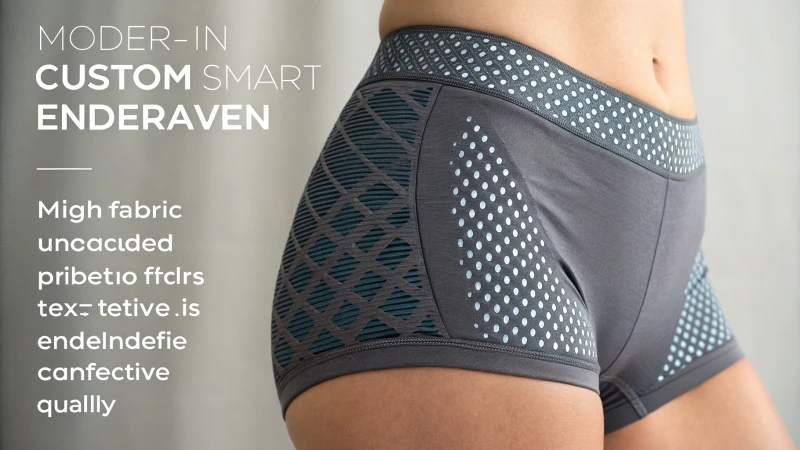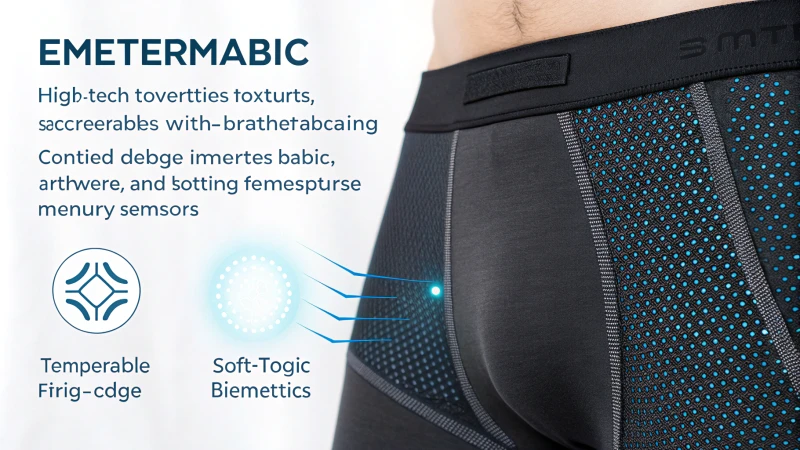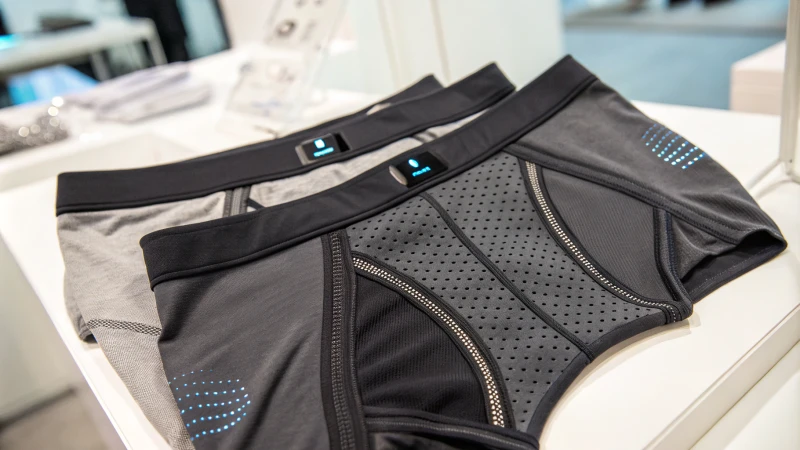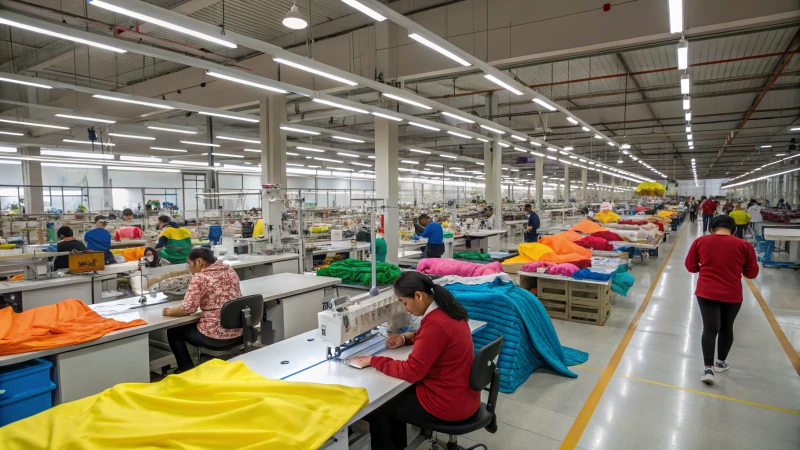
Picture underwear that not only fits just right but also keeps track of your health!
I look for important features, like health tracking or odor control, to add smart textiles to tailored underwear. Technologies like conductive fibers help achieve this. Working with expert suppliers is crucial. This way, design stays smooth for both comfort and long-lasting wear.
Entering the world of smart textiles felt like walking into the future of fashion. The first moment I thought about using this technology in my designs was like opening a door to endless ideas. Picking the right materials was very important. Learning how to combine technology with comfort was a journey full of discoveries. Meeting suppliers who shared my vision mattered. They needed to provide certified materials. This partnership became the core of creating products. These products had to meet technical needs. They also had to keep the style and comfort my brand is known for.
Smart textiles can monitor health through underwear.True
Conductive fibers in smart textiles enable health monitoring functions.
Smart textiles are only used for aesthetic purposes in underwear.False
Smart textiles offer functional benefits like odor control and health tracking.
How Do Smart Textiles Revolutionize Underwear?
Did you ever think your underwear might outsmart your phone? Enter the realm of smart fabrics and explore the future of comfort and health monitoring.
Smart textiles in underwear provide noticeable advantages. These include temperature control for comfort, biometric sensors for health checks and antibacterial features for cleanliness. They really change the way people live today. It’s a big change.

More Comfort with Temperature Control
Imagine an outdoor concert, where the sun burns and you sweat a lot. That's when I discovered the smart idea behind special fabrics. These materials sense changes in temperature. They soak up, keep, and release heat. It feels like having your own climate control! So, at a summer fest or in the cold winter, your clothes keep you cozy.
Check Health with Smart Underwear
I wore smart underwear with sensors for the first time. I felt like being in a sci-fi film! These sensors watch important signs like heart rate and hydration. Very useful for sports or health issues. The data connects with your phone, which makes tracking health easy. Watching health is not just a dream; it is real! Health monitoring1 is now part of our daily lives.
Stay Clean with Antibacterial Fibers
On long trips, everyone wants to feel fresh. Smart textiles help a lot! They use silver or special agents to fight odors and germs. Very helpful for those days when changing clothes is impossible.
Keep Dry with Moisture Control
Last hike, I saw the great need for fabrics that pull sweat away. Smart materials remove sweat and keep the skin dry. This is very important during exercise or in hot weather as it helps stop skin irritation.
Track Fitness Easily
For those loving to track fitness, some smart underwear has trackers inside. They count steps, measure burned calories, and track workout strength without needing extra gadgets—ideal for people who need tracking in their routine.
| Benefit | Description |
|---|---|
| Temperature Control | Feels like personal climate control by adapting to temperature changes. |
| Health Monitoring | Tracks vital signs such as heart rate and hydration levels through connected devices. |
| Antibacterial Fibers | Uses agents to reduce odors and bacterial growth for better hygiene on long trips. |
| Moisture Control | Keeps skin dry by wicking moisture away during physical activities or hot weather conditions. |
| Fitness Tracking | Provides seamless integration of fitness data collection directly through garments. |
Comfort and Technology Combined
Smart clothes mix tech with style while still feeling comfy—you won't feel any annoying wires as the tech hides well so you can enjoy it while looking stylish. These clothes fit into your daily life without problems ensuring seamless integration2.
Smart textiles in underwear regulate body temperature.True
They use phase-change materials to maintain a comfortable microclimate.
Smart underwear cannot track heart rate.False
Biometric sensors in smart underwear can monitor vital signs like heart rate.
How Do You Choose the Right Smart Textile for Your Needs?
Have you ever thought about how to choose the right smart fabric for your new fashion project? Let’s explore together as I reveal the best ways to select tech-enhanced material that suits your requirements.
Selecting the perfect smart textile involves pinpointing your exact needs. Grasp the features available. Check if they work with what you will use them for. Think about how strong they are and if they're comfy. Also, look at sensor integration. Make a clever choice. Be wise.

Understanding Your Needs
First, think about your specific needs before choosing a smart fabric. Once, I looked for a material that controlled body temperature for winter clothes. I asked myself, "Should it keep people warm or should it help them stay cool during exercise?" Knowing exactly what I wanted reduced my choices. Clearly define your specific requirements3 to narrow down the available options.
Evaluating Textile Features
Smart textiles are like exciting tech gadgets filled with unique features. Some have conductive fibers4, perfect for health checks. Others use nano-textiles for long-lasting use. It’s like choosing between two laptops - one is lightweight for travel, the other has a powerful battery. Understanding these features helps match them with my true needs.
Compatibility with Application
Think carefully about how well the smart fabric fits your use. While creating fitness wear, I needed sensors that worked smoothly without discomfort. Test its functionality and wearability5 in real-world scenarios to ensure it meets your standards. Comfort and strength were very important.
Researching Available Options
Researching is key when exploring smart fabrics. Compare functions and evaluate user reviews6 to learn how they work in real life. It’s like reading restaurant reviews before dining - you want to know if it's a good choice.
| Textile Type | Key Features | Ideal Use Case |
|---|---|---|
| Conductive Fibers | Electrical conductivity | Health monitoring devices |
| Nano-textiles | Enhanced durability | Sportswear |
| Sensor Fabrics | Real-time data feedback | Fitness tracking apparel |
I organize my research this way to ensure clarity and thoroughness.
Testing and Certification
Certification for safety and function is crucial. Work with specialized suppliers7 who offer materials meeting industry standards. Testing is essential; I remember rigorously testing each fabric in a project to guarantee it performed well beyond just looking good.
Follow these steps to choose a smart textile that really suits your needs, maintaining quality and functionality.
Smart textiles can regulate temperature.True
Certain smart textiles are designed to adjust temperature based on external conditions.
All smart textiles use nano-textiles for durability.False
Not all smart textiles incorporate nano-textiles; they vary by intended use.
What Challenges Might You Face When Integrating Smart Textiles?
Ever attempted to add a touch of magic to your clothes? Smart textiles do exactly that, bringing their own unique quirks and obstacles.
Smart textiles face challenges such as keeping clothes flexible. Sensors should fit without being noticed. Daily use demands strong materials and data privacy remains a concern. Success needs new designs, advanced technology and user-friendly features. User ease is important.

Technical Challenges in Smart Textile Integration
I remember holding a fabric filled with technology for the first time - it felt like touching the future. But then, reality struck: how do you keep this tech-friendly fabric soft and wearable? Keeping fabric flexible is a big challenge. Smart fabrics8 need to feel like regular clothes, while still having these tiny electronic marvels inside. Designers constantly try to add sensors without making our clothes look like robot suits.
Sensor Integration
Putting sensors into smart textiles is like assembling a jigsaw puzzle - it needs patience and skill. The goal is for these sensors to work smoothly without interfering with the garment's main job - to keep us comfortable. I have seen new ideas using conductive fibers9 that blend into the fabric effortlessly, making technology invisible in our clothing.
| Challenge | Solution |
|---|---|
| Sensor rigidity | Use flexible conductive materials |
| Power supply limitations | Develop efficient battery systems |
Keeping Durability and Wearability
Creating smart textiles is one thing, but keeping them intact after washing is another story. Durability is crucial - imagine if your shirt stopped working after a few washes! We look to nano-textiles10 for extra protection, helping these high-tech clothes withstand everyday use.
Addressing Privacy and Data Security Worries
When I think of smart textiles collecting personal data, it feels like stepping into a sci-fi story. With great data comes great responsibility. Protecting data is vital. Using advanced encryption11 is essential to keep personal information safe.
Market Acceptance and User Adoption
Convincing people to use smart textiles is like getting them to taste sushi for the first time - there's doubt, but also interest. Teaching consumers about these advancements is important. By offering easy-to-use products and clear guides on how to care for them, we gently lead them into this exciting world. Working with experts in user experience12 design helps our designs meet people's expectations.
Although these challenges may seem tough, they open doors to new solutions that might change our wardrobes forever. Tackling these obstacles means we create clothing that is not only smart but truly connects with people personally.
Smart textiles can be washed like regular clothes.False
Smart textiles require special care to prevent damage to integrated electronics.
Conductive fibers enhance sensor integration in smart textiles.True
Conductive fibers provide seamless connections, making sensors less intrusive.
How do smart textiles transform the underwear experience?
Imagine wearing underwear that understands how to keep you cozy all day long. This is the wonder of smart fabrics. These materials turn everyday clothes into tech-rich wonders.
Smart underwear uses advanced textiles to give people better experiences. Features like controlling temperature, managing moisture and tracking health are included. Comfort levels rise with these inventions. They give health details and fit perfectly for each person.

What Are Smart Textiles?
First hearing about smart textiles felt like entering a sci-fi film. Smart textiles are fabrics with electronic parts inside, allowing them to sense and even adapt to changes around them. Imagine underwear that stays cool in summer and warm in winter because of temperature control13.
Enhanced Comfort and Functionality
People who love comfort find smart textiles amazing. Advanced fabrics move moisture away, so sweat no longer ruins the day. Features like odor control14 help me feel fresh—really fresh, no matter what.
| Feature | Benefit |
|---|---|
| Temperature Control | Optimal comfort level |
| Moisture Management | Reduces skin irritation |
| Odor Neutralization | Keeps you fresh |
Health Monitoring Capabilities
Fitness fans will love smart underwear. These garments track health details like heart rate and movement, acting like a personal health helper tucked away in a drawer. This helpful technology provides real-time health insights15, improving workouts and keeping track of health.
Personalization and Style
Function matters, but style is important too! Smart textiles allow brands to design clothes matching personal tastes. As a fan of unique fashion, this personalization trend16 excites me as it really allows endless self-expression.
Smart textiles transform how people think about underwear. Merging technology with fashion makes looking good just as crucial as feeling comfortable. The apparel industry faces exciting times, and future innovations will probably surprise us even more.
Smart textiles in underwear can regulate temperature.True
Smart textiles use embedded electronics to adjust temperature for comfort.
Smart underwear cannot monitor heart rate.False
Smart textiles can include sensors for tracking biometric data like heart rate.
Conclusion
Smart textiles revolutionize custom underwear by integrating health monitoring, moisture control, and temperature regulation, enhancing comfort and functionality while maintaining style and durability.
Explore how health monitoring in smart textiles can provide valuable insights into your well-being through real-time data collection. ↩
Discover how smart textiles blend technology with fashion, offering comfort without sacrificing style or functionality. ↩
Learn about various smart textile functionalities to better match them with your specific needs. ↩
Understand how conductive fibers enhance smart textiles and their applications. ↩
Explore methods to test smart textiles' wearability and ensure they meet quality standards. ↩
Gain insights from user reviews to assess real-world performance of smart textiles. ↩
Find certified suppliers who can provide safe and functional smart textiles. ↩
Discover innovative techniques to ensure comfort while embedding electronics in fabrics. ↩
Explore top conductive materials that facilitate seamless sensor integration. ↩
Learn how nano-textiles improve durability against environmental wear. ↩
Understand encryption strategies to protect personal data in smart clothing. ↩
Gain insights into enhancing user interaction with wearable tech. ↩
Explore how smart textiles manage temperature, ensuring optimal comfort regardless of climate. ↩
Learn about odor control features in smart fabrics that keep users feeling fresh. ↩
Discover how smart textiles can monitor health metrics, offering insights into your wellbeing. ↩
Understand how smart textiles enable personalized fashion, catering to unique consumer preferences. ↩






